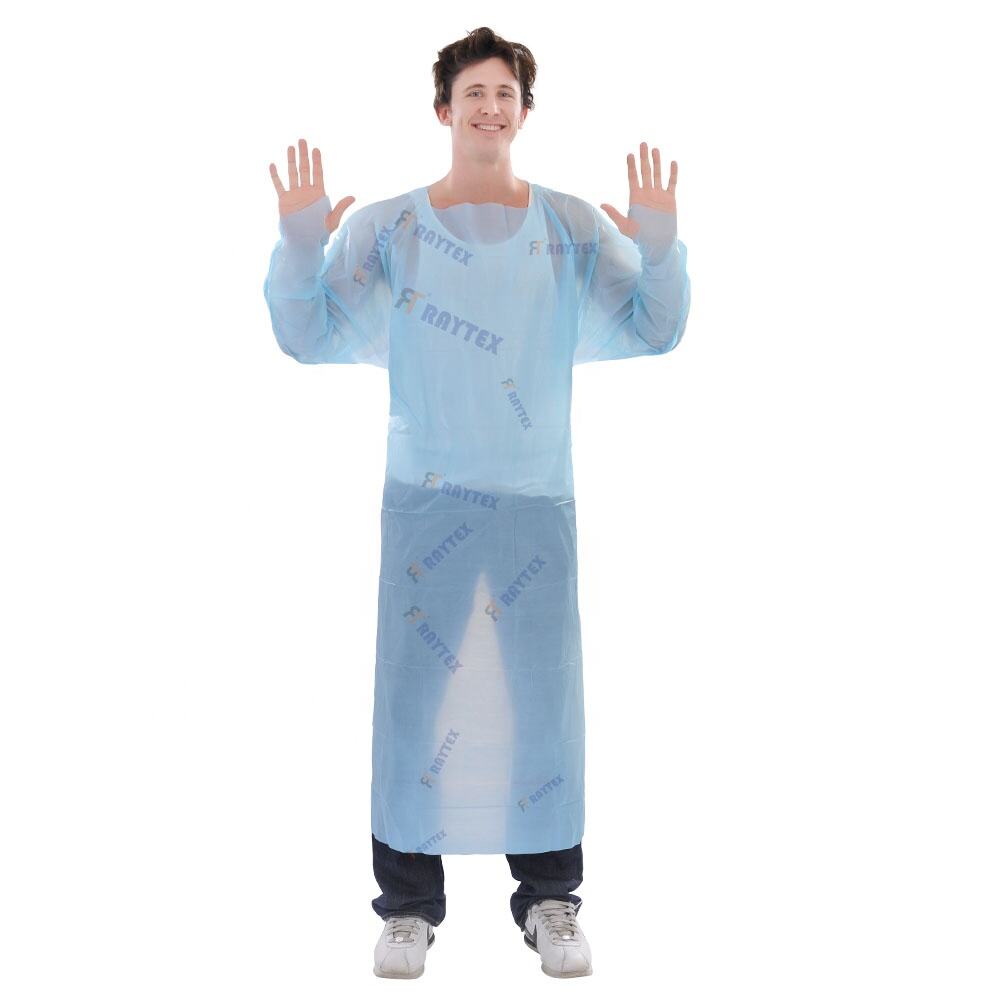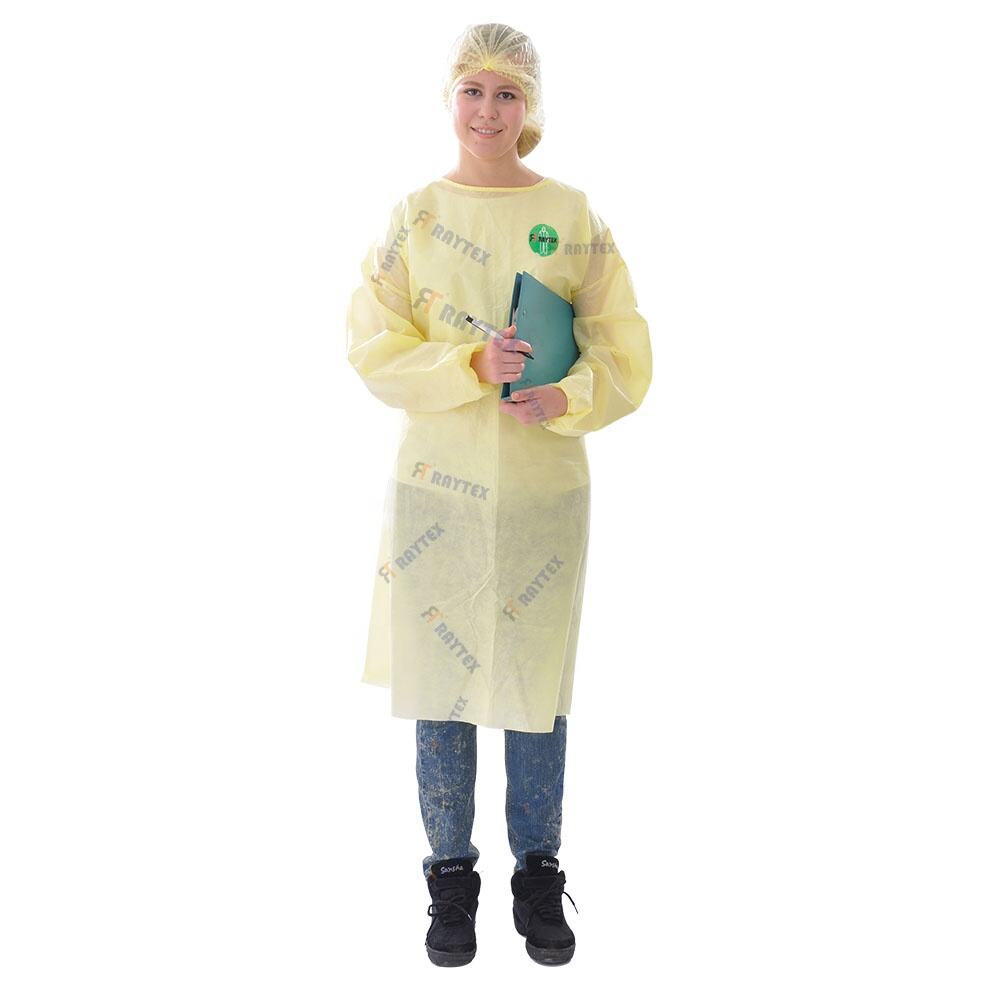Isolation gowns for food borne disease isolation are specialized protective garments designed to prevent the spread of pathogens that cause foodborne illnesses, such as Salmonella, E. coli, and Listeria, in food processing, handling, and preparation environments. These gowns serve as a critical barrier between workers and food products, as well as between contaminated surfaces and clean areas, reducing the risk of cross-contamination during outbreaks or routine hygiene protocols. Constructed from lightweight yet durable non-woven materials like SMS (spunbond-meltblown-spunbond) polypropylene, they offer a balance of liquid resistance, breathability, and particle filtration—key properties for blocking bodily fluids, food residues, and microbial particles. The design features full-length coverage with long sleeves, elastic cuffs, and a secure front closure (typically ties or hook-and-loop fasteners) to ensure no gaps where pathogens could penetrate. Many models include a high neckline and extend below the knees to cover street clothing, minimizing the risk of transferring contaminants from personal attire to food contact surfaces. Compliance with food safety and hygiene standards is paramount, with these gowns adhering to regulations such as FDA 21 CFR 177.1520 (for food-contact materials) and EU 10/2011, ensuring they are free from harmful substances that could migrate into food. They are also tested for microbial barrier efficiency, meeting criteria set by ASTM F1671 for resistance to blood-borne pathogens, which translates to effective blocking of foodborne bacteria. Disposable variants are preferred in high-risk scenarios to eliminate the need for laundering, which can spread pathogens if not done properly, while reusable options are designed for industrial sanitization with heat or chemicals that kill foodborne microbes. In addition to protecting food products, these gowns shield workers from exposure to pathogens present in spoiled food or contaminated equipment, reducing the risk of occupational illness. They are particularly valuable in settings like meat processing plants, where cross-contamination is a known risk, and in catering facilities during outbreaks. By integrating these gowns into hygiene protocols, food businesses not only comply with global health regulations but also safeguard consumer health, reduce product recalls, and maintain trust in their brands—making them an essential tool in the prevention of foodborne disease transmission.


